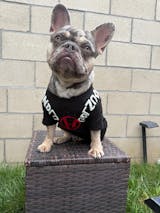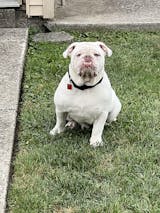The Importance of Dog Food, Nutrition, and Diet
We all know how important a healthy diet is for humans, but did you know that what your dog eats plays a huge role in their overall health too? Just like us, dogs need a balanced diet to stay strong, energetic, and happy. In this post, we’ll talk about the importance of a high-quality, balanced diet for your dog, how food allergies can affect them, and the different types of dog food available. Let’s dive into the world of doggy nutrition!

Why a High-Quality, Balanced Diet Matters:
Imagine eating junk food all the time without getting the right nutrients your body needs to fuel itself properly. You would probably feel tired, sick, and not at your best. Well, dogs are no different! A high-quality, balanced diet is key to ensuring that your dog stays healthy.
You may be thinking, what exactly is a balanced diet for a dog? It’s a mix of protein, fats, carbohydrates, vitamins, and minerals that work together to support your dog’s overall health. Dogs need protein for muscle growth and energy, healthy fats for skin and coat health, and carbs for fuel. Plus, vitamins and minerals help with everything from bone strength to immune system function. A high-quality dog food will make sure all of these nutrients are in the right amounts, so your dog gets the best nutrition possible.
Just like people, dogs can have different nutritional needs based on their breed, size, age, and activity level. For example, puppies need more protein for growth, while older dogs may need fewer calories to avoid weight gain. A balanced diet helps ensure that your dog stays at a healthy weight and has the energy they need for daily play and walks.
Food Allergies in Dogs:
Did you know that some dogs have food allergies just like humans? If your dog is constantly scratching, has upset stomachs, or experiences other skin problems, it might be due to a food allergy. The most common food allergens for dogs include chicken, beef, dairy, wheat, and soy. Some dogs can also be sensitive to grains, though this isn’t as common as people might think.
If your dog is reacting to their food, it may be recommended to try a special hypoallergenic dog food or an elimination diet to figure out what’s causing the problem. A hypoallergenic diet typically includes a limited number of ingredients, which helps prevent allergic reactions. Once you identify the trigger, you can avoid certain ingredients and keep your dog feeling great.
Food allergies can cause a variety of symptoms, so it’s important to watch your dog closely. If they seem lethargic, have gastrointestinal issues, or develop itchy skin, a food allergy could be the culprit. One of the lesser-known signs of food allergies is tear stains. Some dogs are more prone to tear staining around their eyes, which can become even more noticeable when their immune system is compromised by allergens.
This is where Squishface Wrinkle Wipes come in handy! These special wipes are not just for cleaning your dog’s face but are perfect for gently wiping away those stubborn tear stains. They contain the powerful ingredients ketoconazole and chlorhexidine, which help fight against bacteria, yeast, and fungus. This is particularly helpful if your dog is prone to skin infections in their wrinkles, which is a common issue with certain dog breeds like Bulldogs and Pugs. By keeping their skin clean, especially around their mouth and eyes, you can prevent irritation and infections caused by these food allergens.

Types of Dog Food: Which One Is Right for Your Pup?
There are a lot of different types of dog food out there, and choosing the right one can be a bit overwhelming. The three main categories are dry food, wet food, and raw food. Let’s take a look at each type:
Dry Dog Food
Dry dog food, or kibble, is the most common type of dog food. It’s convenient, easy to store, and can be very affordable. Kibble is great for dogs with dental issues because the crunching action helps clean their teeth. Just make sure you choose a high-quality kibble that’s packed with nutrients. Look for brands that list real meat as the first ingredient and avoid fillers like corn or soy.
Wet Dog Food
Wet dog food comes in cans or pouches, and many dogs find it more flavorful than dry kibble. It’s great for dogs who need extra hydration, especially if they don’t drink enough water on their own. Wet food can be a little messier than kibble, but it’s a good option if your dog has dental issues or is a picky eater. Just keep in mind that it’s often higher in fat and calories, so portion control is important.
Raw Dog Food
Raw dog food is a more natural option that includes raw meat, bones, fruits, and vegetables. Some dog owners swear by raw diets, claiming that it gives their pets more energy and better overall health. However, feeding raw food comes with risks, including bacterial contamination and an unbalanced diet.
The Bottom Line:
Just like us, dogs need a high-quality, balanced diet to stay healthy. By feeding your dog the right food, you help them maintain strong muscles, shiny fur, and a happy, energetic life. If your dog has food allergies, be sure to identify any problem ingredients and switch to a hypoallergenic diet. And with all the types of dog food available, you can choose the best option based on your dog’s needs and preferences.
The next time you’re at the pet store, remember that what you feed your dog is just as important as their playtime and cuddles. A healthy diet is the foundation of a happy, active dog – and we all want a long and healthy life for our pups, don’t we?
Be sure to follow us on TikTok, Instagram, Facebook, Pinterest, YouTube, and visit our blog weekly for more tips on caring for your adored doggo, and the latest on all things Squishface!










